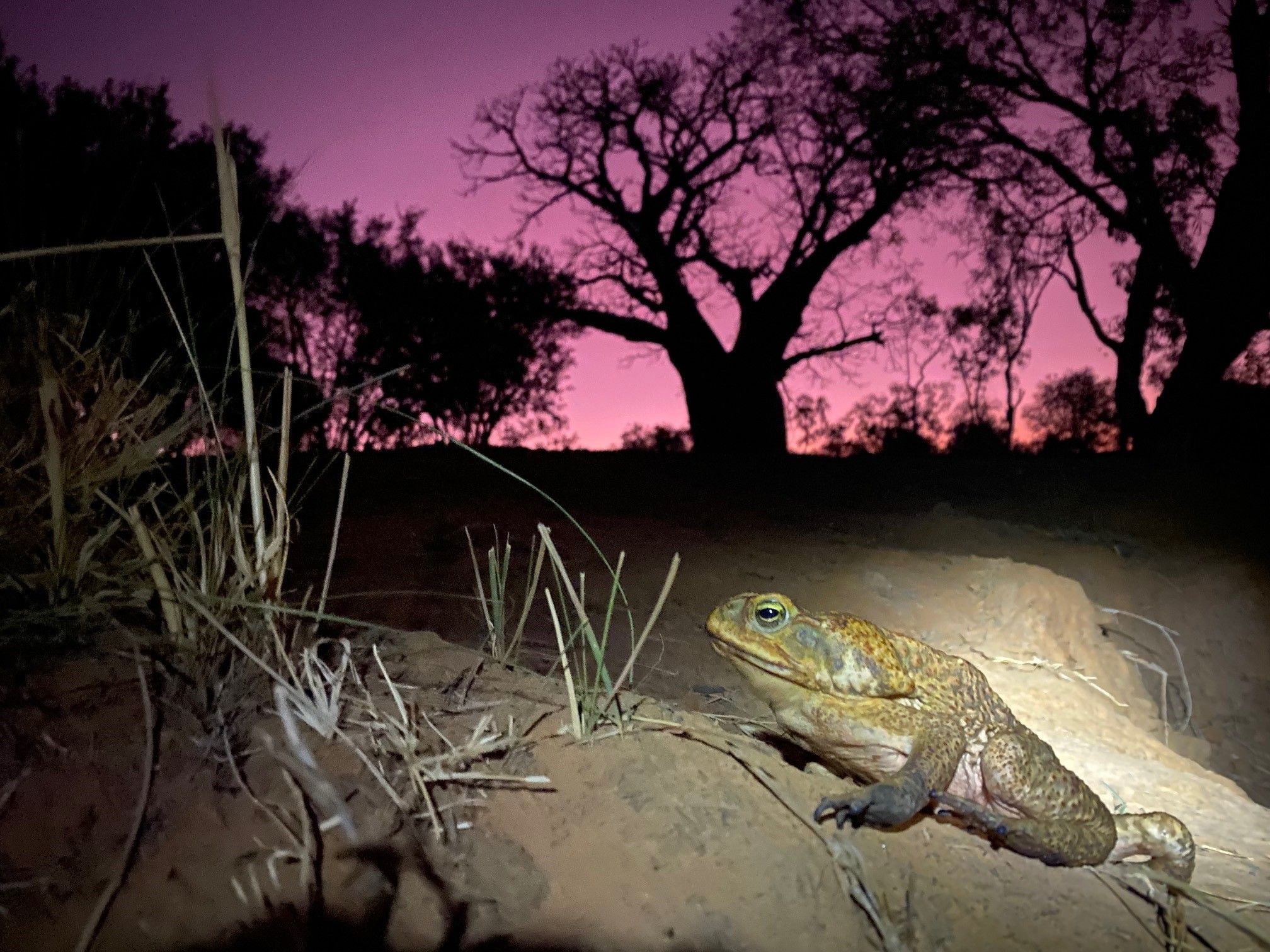Toad-ally awesome project to halt cane toad invasion
Media release
Stopping cane toads with a Toad Containment Zone (TCZ) before they reach the Pilbara in Western Australia will protect 27 million hectares of sensitive habitat, significant Aboriginal cultural heritage, and a trove of native Australian animals from population decline.
After more than a decade of collaborative research between scientists at Deakin and Curtin Universities, traditional custodians, rangers, and pastoralists, the TCZ was created to halt a toad invasion with a landscape level strategy – effectively, a ‘toad-break’ – on the edge of the Great Sandy Desert.
The TCZ was a key recommendation of the 2019 Federal Senate enquiry and a priority action in both Nyangumarta Warrarn and Karajarri Indigenous Protected Area plans.
Now, the Honourable Reece Whitby MLA, Western Australian Minister for Energy, Environment, and Climate Action, has announced funding for the first phase of a plan to deliver the toad-break.
Without it, the risk is toads will invade the Pilbara and regions further south, causing massive declines in endemic species and adding to Australia’s biodiversity crisis.
'By smart control of water sources, we can stop the toad invasion', said Curtin University Professor Ben Phillips. 'Toads invade by steadily moving across the landscape in the wet season. In the dry season, toads contract to water points, to wait out the long, hot dry season. Without access to water, toads in the containment zone will perish.'
Deakin University Director of Deakin Marine Scientific Research and Innovation Centre Professor Tim Dempster, said:
'Toads were introduced to Australia by a Queensland Government scientist in the 1930s and have since conquered the tropical north. As a Queenslander, this is not a State-of-Origin record I’m proud of! We now have a chance to finally halt this invasion in its tracks.'
'Like a firebreak that stops bushfire by removing fuel from in front of the fire, the toad-break will work by removing the fuel that toads need to invade – water', said Professor Ben Philips. 'In the toad-break area between the Kimberley and the Pilbara along a narrow-coastal strip, we will remove toads’ access to water at 150 man-made water-points.
Cane toads will arrive at the top of the toad-break area by the 2027/2028 wet season if they maintain their current invasion speed. We need to be ready for them, so the time for this plan is now.'
'Ever since the idea of the toad-break arose nearly 10 years ago, the Nyangumarta and Karajarri traditional custodians have been on board guiding and informing the way ahead,' said NRM Rangelands Program Manager, Chris Curnow. 'Their knowledge of the area has helped pinpoint the various water sources and have guided scientists as to where the zone will have its best chance of success.
When the Toad Containment Zone is rolled out by Nyangumarta and Karajarri ranger programs, and supported by our Rangelands NRM team, the Zone will be a piece of nationally significant infrastructure to protect biodiversity.
It is a once in a lifetime opportunity to prevent an ecological catastrophe across the entire Pilbara. We thank the WA State Government for supporting this important community-led initiative.'
For more detail of the TCZ, see website: www.toadfree.zone
Press pack including an animation that explains the TCZ, a map of the TCZ location, and images of species threatened if the toads invade the Pilbara.
Joint press release - Deakin University, Curtin University, Rangelands NRM, Nyangumarta Warrarn Aboriginal Corporation, Karajarri Traditional Lands Association

